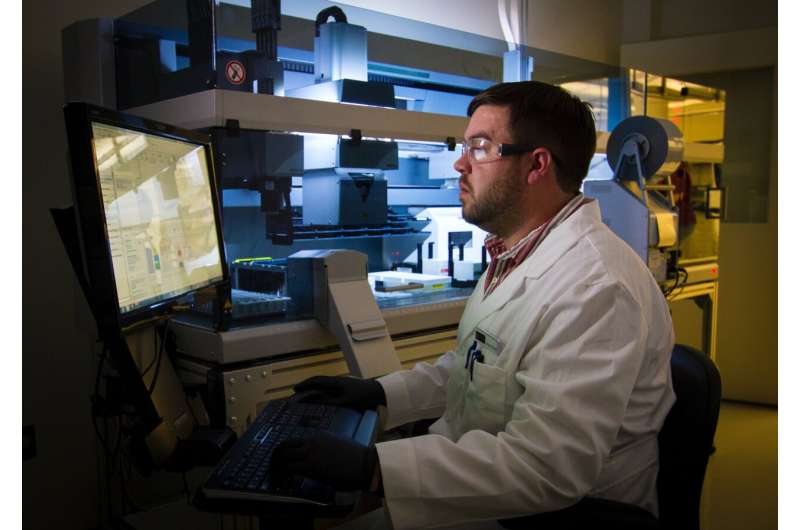Funding Cuts Threaten the Future of Biomedical Research and Emerging Scientists

Recent federal budget proposals threaten to cut nearly 40% of the NIH budget, risking a setback in biomedical research and the careers of young scientists across the U.S. Learn about the implications and community responses.
Recent months have brought growing concern across laboratories in the United States, as financial support for biomedical research faces significant cuts. Researchers at all levels—from graduate students to senior faculty—are encountering halted experiments, restructured career plans, and the unsettling realization that long-term funding may no longer be reliable. Some scientists are even contemplating leaving the U.S. to pursue opportunities elsewhere.
This widespread anxiety is primarily driven by a shift in research funding policies and priorities. The federal government proposed an almost $18 billion reduction in the National Institutes of Health (NIH) budget for Fiscal Year 2026, amounting to about 40% of the 2025 budget. If approved by Congress, this cut will take effect on October 1 and could cause immediate and lasting damage to the research ecosystem.
Experts warn that such cuts will have both immediate and long-term detrimental effects. Stephen Jameson, president of the American Association of Immunologists, emphasized that ongoing projects, clinical trials, and the training pipeline for future scientists are all at risk. He expressed concern that these actions threaten to diminish the U.S.'s global leadership in biomedical innovation.
The rationale behind the proposed cuts centers on claims of reducing wasteful spending and promoting transparency, but many in the scientific community see it as a threat to progress. A group of scientists and data analysts launched Grant Watch, an independent initiative that tracks grant cancellations. As of July 3, they reported over 4,400 affected NIH grants, valued at more than $10.1 billion, impacting a wide range of research—including fundamental studies, fellowships, and infrastructure support.
The NIH is instrumental to American research, supporting over 300,000 scientists and technical staff across thousands of institutions. Studies show NIH funding contributed to every one of the 210 new drugs approved by the FDA between 2010 and 2016. Experts highlight that such breakthroughs are only possible through sustained federal investment, which also fuels the economy—every dollar spent by NIH generates over $2.50 in economic activity.
Beyond the funding, there is a looming risk of a 'brain drain.' Many U.S. scientists are considering relocating to countries like Europe and Canada due to dwindling support and job prospects. According to a March survey by Nature, 75% of U.S. researchers are exploring options abroad. Dr. Antoni Ribas from UCLA noted immediate effects, such as senior scientists seeking positions elsewhere and fewer opportunities for young researchers—leading to a decline in faculty hiring and startup funding.
The biotech industry is also feeling the strain, with companies struggling to raise capital, further reducing employment and research opportunities. Ribas warned that despite advances in biomedical tools and treatments, the current political and financial environment threatens to undermine progress, leaving the research infrastructure fragile.
Graduate students and postdoctoral fellows face significant uncertainty. Funding delays, cancellations, and visa-related issues create a precarious environment. Julia Falo, a postdoctoral fellow at UC Berkeley, highlighted that many colleagues experience sudden grant withdrawals, sometimes based on vague or discriminatory reasons. For visa holders, losing funding could mean immediate job loss or forced departure from the country.
Despite these challenges, the research community is rallying. Campuses, advocacy groups, and unions organized protests and campaigns to oppose the budget cuts. Legal actions, including a lawsuit led by public health organizations, resulted in the reinstatement of over 900 canceled grants and marked a step against unlawful cancellations.
While efforts to restore funding continue, the damage—paused projects, job losses, and disrupted careers—cannot be fully undone. Nonetheless, hope persists among scientists and supporters who remain committed to defending and advancing biomedical research. The resilience of the research community underscores the importance of sustained support for scientific progress and innovation.
source: https://medicalxpress.com/news/2025-07-threaten-future-biomedical-young-scientists.html
Stay Updated with Mia's Feed
Get the latest health & wellness insights delivered straight to your inbox.
Related Articles
US Nears 1,200 Measles Cases as Ohio Declares Outbreaks Over
The United States approaches 1,200 measles cases in 2025, with recent outbreaks in Texas, New Mexico, and other states being closely monitored as Ohio declares its outbreaks over. Vaccination remains key to prevention.
Idahoans Brace for Rising Insurance Costs and Potential Coverage Loss
Concerns rise in Idaho over skyrocketing health insurance premiums as federal subsidies end, risking reduced coverage and worse health outcomes for many residents.
Innovative Gene Therapy Strategies Target Advanced Inherited Retinal Degenerations
New gene therapy promoters show promise for treating advanced stages of inherited retinal degenerations, potentially restoring vision even after significant retinal damage.
Men's Health Month: A Crucial Time for Prevention and Awareness
June marks Men’s Health Month, a vital time to raise awareness about men's health issues, screenings, and prevention strategies to promote longer, healthier lives.



